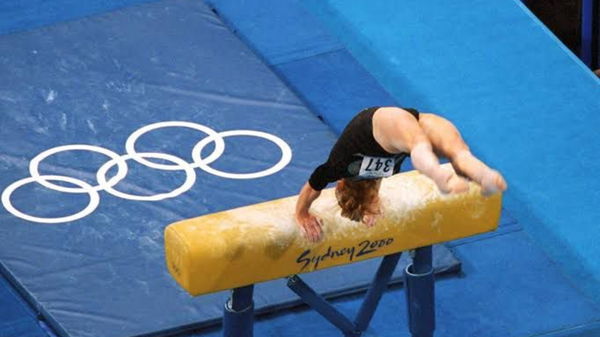

As Paris approaches, with only 46 days remaining, the gymnastics world finds itself in a whirlwind of anticipation. At the recent US Classics, athletes encountered unexpected challenges, with Gabby Douglas experiencing two falls on the bars. Similarly, at the Xfinity Championship, Simone Biles faced a stumble during her vault, while Kayla DiCello had an uneven bars mishap, and Jade Carey faltered on the balance beam.
These mishaps led fans to dub these apparatuses as “cursed.” However, these incidents merely hint at what’s to come, recalling the greatest controversy in gymnastics history: the 2000 Sydney Vault, where numerous athletes suffered falls, a legacy that continues to be revisited in the sport’s memory.
ADVERTISEMENT
Article continues below this ad
ADVERTISEMENT
Article continues below this ad
During the women’s all-around competition at the Sydney Olympics, held from September 15 to October 1, 2000, a significant mishap occurred during the vault event. The vault was mistakenly set 5 cm too low, with the horse positioned at 120 cm instead of the required 125 cm. This error resulted in multiple gymnasts experiencing falls.
Elise Ray fell on her back after her vault during the gymnastics all-around finals. Annika Reeder of Great Britain lined up, missed her landing, and injured her ankle, much to the dismay of the 15,000-strong crowd in Pavilion 3.
Even the favored contender for the all-around title, Svetlana Khorkina, took her turn, only to fall on her backside, prompting raised eyebrows and serious questions.
Allana Slater raised concerns about the vault’s height discrepancy and raised her concerns to her coach, Peggy Liddick. After measuring, it was confirmed that the vault was indeed set too low, leading to controversy and the need for a redo of only 5 gymnasts’ routines. Subsequently, the vault was adjusted to the correct height. Following the competition, Kym Dowdell, the competition manager, acknowledged the error, stating, “
Unfortunately, equipment personnel failed to set the vault at the appropriate height.”However, Romania dominated the podium, claiming all three top spots in the women’s all-around gymnastics competition. Andreea Raducan gracefully accepted the gold medal, while Simona Amanar secured the silver and Maria Olaru clinched the bronze. Amidst the celebration, there was a sense of incredulity among fans, even on platforms like Reddit.
One user expressed disbelief, questioning how the judges could have overlooked the glaring issue with the vault, “Aye, thats a bit odd aint it, the first 5 girls not coming close to their landing. Those fuck head judges not even spot something would have been off?. Some of those knee impacts look like they could career changing.” Indeed, it underscores the vital need for athletes to speak up if they sense something is awry. Now the big question arises: how much should be the length of the Vault?
Evolution of women’s vault height in gymnastics
From 1950 until the mid-1970s, the women’s vault stood at a height of 1.10 m (33.528 cm) from the ground. However, in a significant shift during the mid-1970s, the vault height was raised to 120 cm. Over the next two decades, from the mid-1970s to the late 1990s, the vault height remained constant at 120 cm.
Then, in a notable move, the Women’s Technical Committee of the FIG decided to raise the vault height to 125 cm from the floor, effective January 1, 1998. This adjustment, highlighted in a publication by USA Gymnastics’ Technique in November/December 1997, signaled a significant change in the sport’s technical specifications.
However, despite being implemented for almost 1,000 days by the time of the women’s all-around competition on September 21, 2000, this alteration somehow failed to find its way into the Apparatus Norms published in 2000, raising questions about the oversight surrounding the technical regulations of the sport.
As of 2024, according to Wikipedia, the length of the vault for women should be 120 cm, with a width of 90 cm, while for men, it should stand at a height of 135 cm. This shows the importance of accurate and updated regulations to ensure the safety and fairness of gymnastics competitions.
ADVERTISEMENT
Article continues below this ad
ADVERTISEMENT
ADVERTISEMENT
ADVERTISEMENT
ADVERTISEMENT

